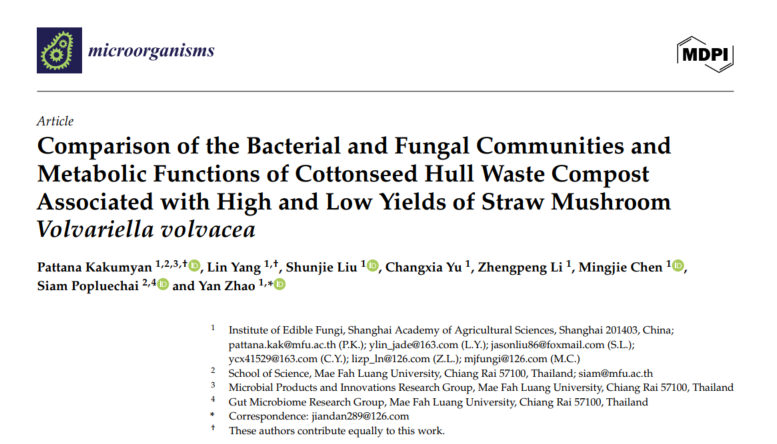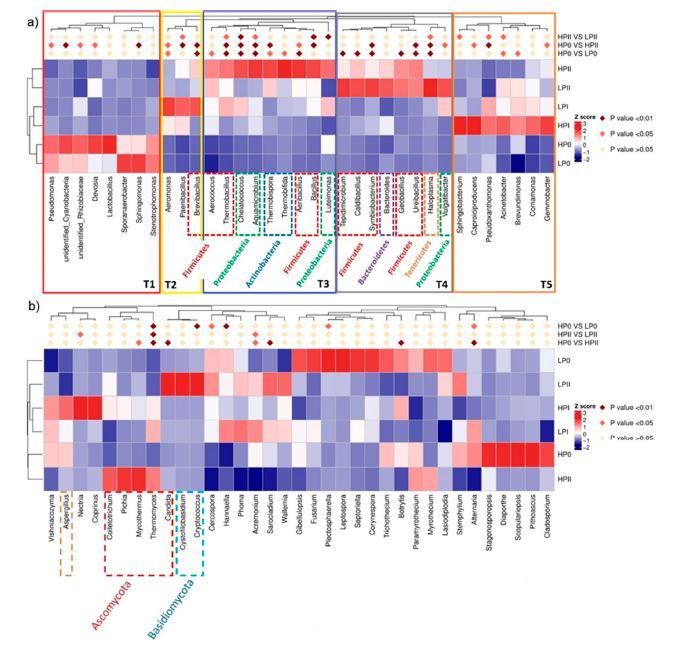SAAS and Mae Fah Luang University Jointly Publish Research Findings
Recently, researchers from the Institute of Edible Fungi, SAAS, in collaboration with the team from Mae Fah Luang University in Thailand, published a significant study titled "Comparison of the Bacterial and Fungal Communities and Metabolic Functions of Cottonseed Hull Waste Compost Associated with High and Low Yields of Straw Mushroom Volvariella volvacea" in Microorganisms (Q2, IF=4.2). Dr. Pattana Kakumyan from Mae Fah Luang University and Assistant Researcher Yang Lin from SAAS are the co-first authors, with Researcher Zhao Yan from the Institute of Edible Fungi serving as the corresponding author. The paper represents partial scientific achievements from a collaborative project between China and Thailand conducted in Shanghai.

Straw mushrooms (Volvariella volvacea) are prized for their delicious taste and rich nutritional value, particularly popular in Southeast Asian countries. Originating from China, their cultivation relies heavily on compost quality. Cottonseed hulls are a common substrate for straw mushroom production. The research team aimed to compare bacterial and fungal communities in cottonseed hull compost under high-yield (HBE) and low-yield (LBE) conditions, exploring the interplay between microbial metabolic functions and mushroom yield to optimize composting processes and enhance production efficiency.
Using a compost formula of cottonseed hulls and lime (95:5), the team prepared compost through two fermentation phases (PI and PII). They employed 16S rRNA and 18S rRNA gene sequencing to analyze bacterial and fungal community structures, combined with functional prediction tools to assess microbial metabolic pathways, while measuring physicochemical indicators during composting. Key findings include:
At the end of composting, HBE compost was dominated by Chelatococcus and Thermobacillus (50.3% relative abundance), whereas LBE compost showed higher proportions of Symbiobacterium and Acinetobacter (40.8%).
HBE compost exhibited more active metabolic pathways, such as carbohydrate metabolism and amino acid synthesis, which significantly promoted straw mushroom growth.
This study is the first to systematically elucidate the relationship between microbial communities in cottonseed hull compost and straw mushroom yield, providing theoretical support for composting optimization. By regulating dominant microbial groups and metabolic functions, the research paves the way for efficient, standardized cultivation of straw mushrooms, reducing production costs and boosting economic benefits. It also promotes the resource utilization of agricultural waste, contributing to sustainable agriculture.


用户登录